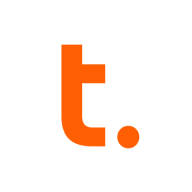

Teradata and Palantir Foundry both compete in the data management and analytics space. Teradata seems to have the upper hand in handling large structured data efficiently, whereas Palantir Foundry excels in ease of use and real-time analytics capabilities.
Features: Teradata includes massive parallel processing, advanced analytics for large structured data, and strong scalability that delivers high performance. Palantir Foundry offers powerful data integration, a low-code platform for ease of use, and robust real-time analytics features.
Room for Improvement: Teradata needs to improve its cost structure, cloud adaptability, and handle unstructured data better. Palantir Foundry users wish for more flexibility in system connections, improved documentation, and easier workflows.
Ease of Deployment and Customer Service: Teradata provides versatile deployment options such as on-premises, cloud, and hybrid, with technical support receiving mixed reviews. Palantir Foundry, deployed primarily on public clouds, is recognized for its user-friendly design but requires better customer service responsiveness.
Pricing and ROI: Both Teradata and Palantir Foundry are perceived as expensive. Teradata's high pricing correlates with its reliable performance, while Palantir Foundry, despite high startup costs, proves more cost-effective over time due to reduced development needs. Both platforms offer strong ROI, enhancing business insights and efficiency.
| Product | Market Share (%) |
|---|---|
| Palantir Foundry | 3.1% |
| Teradata | 0.8% |
| Other | 96.1% |


| Company Size | Count |
|---|---|
| Small Business | 4 |
| Midsize Enterprise | 5 |
| Large Enterprise | 8 |
| Company Size | Count |
|---|---|
| Small Business | 26 |
| Midsize Enterprise | 12 |
| Large Enterprise | 50 |
Palantir Foundry is an enterprise data management platform offering comprehensive tooling for working with big data. Because it is an operating system made for modern enterprises, it is highly available and a continuously updated platform.
Palantir Foundry is a fully managed SaaS platform that spans from cloud hosting and data integration to flexible analytics, visualization, model-building, operational decision-making, and decision capture. It equips technical and non-technical users to make data-driven operational decisions.
Palantir Foundry includes tools to integrate data of any scale, format, or structure, and also has granular, flexible access controls for individual datasets. In addition, it has an open, modular architecture with multiple RESTful APIs, it has native applications for developing machine learning and artificial intelligence, it provides sophisticated data science applications for users of all technical abilities, and much more.
Palantir Foundry Features
The most valuable Palantir Foundry features include:
Security, flexibility, interoperability, easy deployment, built-in role classification, purpose-based access controls, interoperable architecture, model integration, AI modeling tools, ontology, custom workflows, team-specific applications, self-serve analytics, lineage system, operational application building, 200+ data connectors, data versioning, change management framework, sand decision orchestration, and custom dashboard and report building tools.
With Palantir Foundry You Can:
Palantir Foundry Benefits
Some of the many Palantir Foundry benefits include:
Reviews from Real Users
PeerSpot users like Palantir Foundry because it has many advantages:
“It is user-friendly, good automation, and allows you to do a better job of data governance.” - Associate, Inhouse Consulting at a pharma/biotech company
“Works seamlessly with good end-to-end capabilities and the capability to scale.” - Wallace H., Sr. Director at a tech services company
Teradata is a powerful tool for handling substantial data volumes with its parallel processing architecture, supporting both cloud and on-premise environments efficiently. It offers impressive capabilities for fast query processing, data integration, and real-time reporting, making it suitable for diverse industrial applications.
Known for its robust parallel processing capabilities, Teradata effectively manages large datasets and provides adaptable deployment across cloud and on-premise setups. It enhances performance and scalability with features like advanced query tuning, workload management, and strong security. Users appreciate its ease of use and automation features which support real-time data reporting. The optimizer and intelligent partitioning help improve query speed and efficiency, while multi-temperature data management optimizes data handling.
What are the key features of Teradata?In the finance, retail, and government sectors, Teradata is employed for data warehousing, business intelligence, and analytical processing. It handles vast datasets for activities like customer behavior modeling and enterprise data integration. Supporting efficient reporting and analytics, Teradata enhances data storage and processing, whether deployed on-premise or on cloud platforms.
We monitor all Data Integration reviews to prevent fraudulent reviews and keep review quality high. We do not post reviews by company employees or direct competitors. We validate each review for authenticity via cross-reference with LinkedIn, and personal follow-up with the reviewer when necessary.